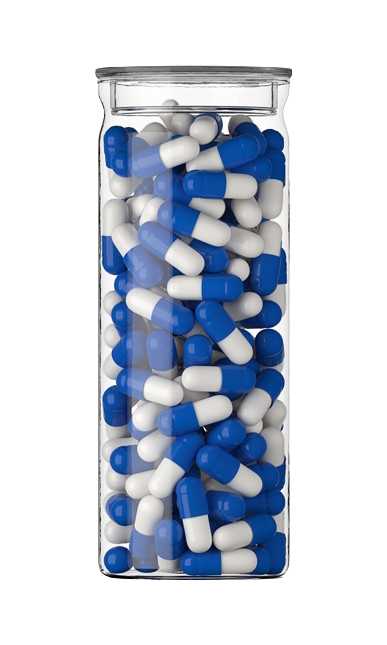Sildenafil / Tadalafil Capsule
Sildenafil
Initially developed for the treatment of pulmonary hypertension, angina, and other cardiovascular conditions, sildenafil citrate was accidentally found to be beneficial in males who suffered from erectile dysfunction (ED). Prior to the discovery of its benefits in treating ED, this condition was considered to be an inevitable part of aging in men or due to underlying psychological causes. After its approval in 1998 by the U.S. Food and Drug Administration for the treatment of ED, the popularity of sildenafil citrate has skyrocketed over the past couple of decades as health care providers generally recommend this medication as the first-line therapy in the management of erectile dysfunction in men. Other contributing factors to its appeal and popularity is that sildenafil citrate can be taken orally on demand, is generally well tolerated, with minimal adverse effects.1
Sildenafil citrate is a vasoactive medication belonging to the drug class of phosphodiesterase – 5 enzyme (PDE-5) inhibitors; it is a competitive antagonist of this enzyme. PDE-5 can be found all over the human body especially in the corpus cavernosum within the penis, striated and smooth musculature, as well as in platelets. However, PDE-5 has the largest distribution in the penile corpus cavernosum which is why sildenafil citrate is able to work selectively in this part of the body.
Sildenafil citrate is generally administered orally. However, it can also be administered intravenously or sublingually. Even though its most popular clinical indication for use is in the management of erectile dysfunction, it is also used in the management of pulmonary hypertension, persistent pulmonary hypertension of the newborn, Raynaud’s phenomenon resistant to other vasodilators, as well as in the prevention of pulmonary edema at high altitudes. After oral ingestion, absorption of sildenafil citrate rapidly occurs mainly in the small intestine from where it is then transported in the bloodstream to its area of action. Sildenafil citrate is metabolized in the liver through the action of the hepatic isoenzymes cytochrome P450 3A4 and cytochrome P450 2C9. Following hepatic metabolism, the metabolites are excreted mainly in the stool and, to a lesser degree, in the urine.
Sildenafil citrate is classified as a pregnancy category B drug by the Food and Drug Administration. Studies have not demonstrated definite risks to fetuses when sildenafil is administered to pregnant mothers. At present, there are no definite clinical indications that warrant the administration of sildenafil citrate in women. Studies done till date have not indicated that sildenafil citrate has comparable benefits in women as they do in men. There are other studies that are still ongoing, however, and their outcomes may provide further insight regarding the utility and benefits of sildenafil in women.
Tadalafil
Tadalafil is a selective phosphodiesterase (PDE) type 5 inhibitor similar to sildenafil and vardenafil. It is administered orally for the treatment of male erectile dysfunction (ED), pulmonary arterial hypertension (PAH), benign prostatic hypertrophy (BPH), or the concurrent treatment of erectile dysfunction and BPH. Tadalafil does not inhibit prostaglandins as do some agents for treating impotence (e.g., alprostadil). Unlike sildenafil, visual disturbances have not been reported with tadalafil, which is more selective for PDE5 than for PDE6 present in the retina. The duration of action of tadalafil for the treatment of ED (up to 36 hours) appears to be longer than that of sildenafil and vardenafil. Because PDE inhibitors promote erection only in the presence of sexual stimulation, the longer duration of action of tadalafil allows for more spontaneity in sexual activity. According to ED treatment guidelines, oral phosphodiesterase type 5 inhibitors (PDE5 inhibitor) are considered first-line therapy.7 Tadalafil was in phase II trials for the treatment of female sexual dysfunction, however, further investigation was discontinued. FDA approval was granted November 2003 for treatment of male erectile dysfunction (ED), and in January 2008, approval was granted for once daily use without regard to timing of sexual activity. Tadalafil (Adcirca) was FDA approved for the treatment of pulmonary arterial hypertension (PAH) in May 2009. In clinical studies of patients with pulmonary arterial hypertension (PAH), tadalafil-treated patients experienced improved exercise capacity and less clinical worsening compared to placebo. In October 2011, tadalafil received FDA approval for the treatment of the signs and symptoms of benign prostatic hyperplasia (BPH) and for the concurrent treatment of erectile dysfunction and BPH.


